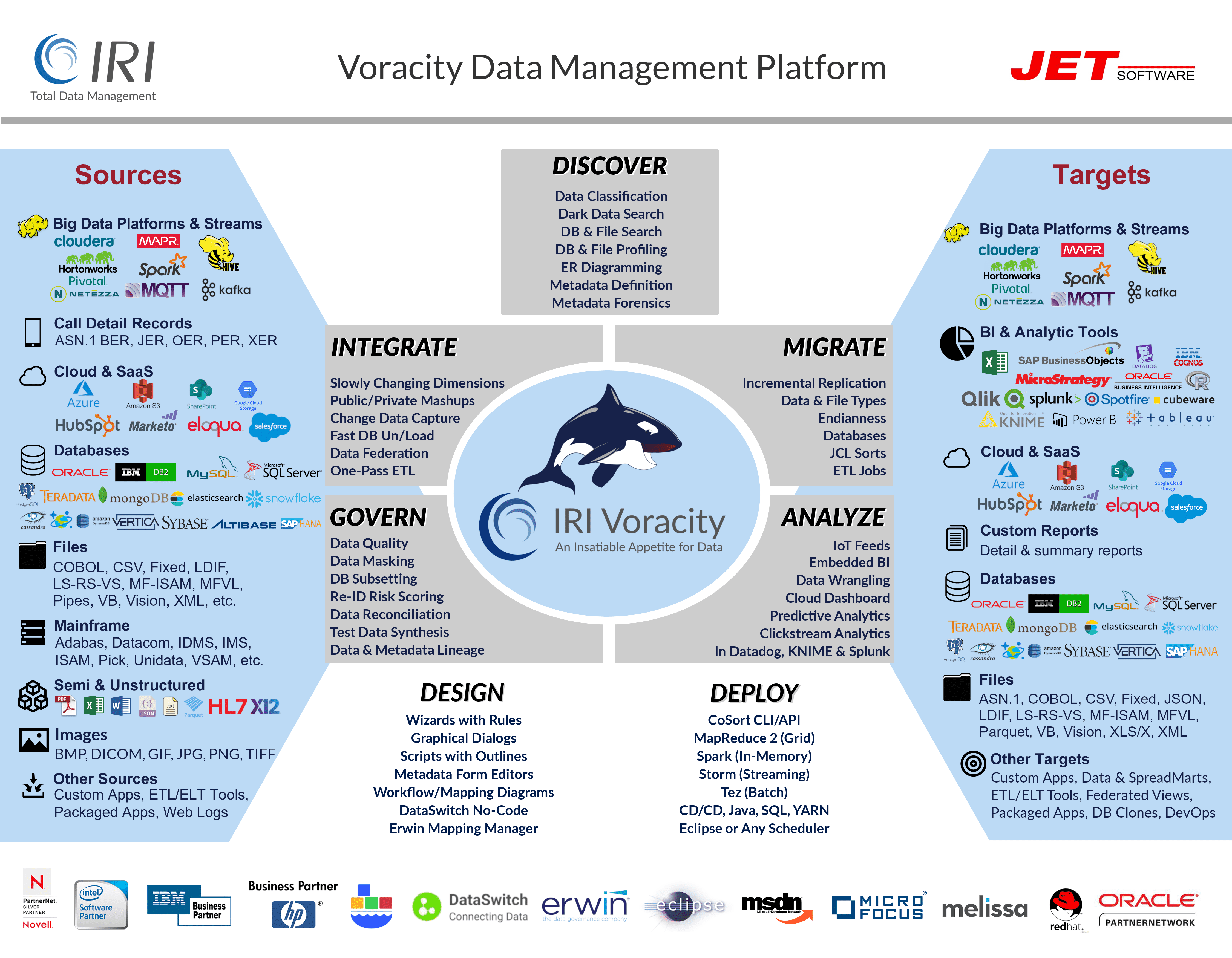Take a Closer Look at Voracity
Inside the Power of the Platform
Voracity's core data management capabilities leverage the functionality of the IRI CoSort SortCL data definition and manipulation program.
As one of the original and few remaining viable fast processing alternatives to Hadoop, SortCL packages, presents, and provisions big data. It combines: data cleansing, extraction, transformation, loading, masking, reporting -- and even synthetic test data generation -- in the same job script and multi-threaded I/O pass in your existing file system.
If however, you still need the scalability and capability of Hadoop, however, you are covered. Voracity supports the execution of SortCL jobs in MapReduce 2, Spark, Spark Stream, Storm, and Tez. Compare that to Hadoop distributions you are considering, or to the disjointed Apache projects you are trying to coordinate.
All of that work in the middle starts with data discovery. Only Voracity provides at least four data profiling tools. And it ends with analytics, where you have three choices: 1) embedded BI, 2) DataDog, KNIME and Splunk integrations; or, 3) robust data preparation (wrangling) for your chosen data visualization platform.

As the above schematic illustrates, Voracity supports the design, deployment and management of all these activities from a single Eclipse pane of glass, IRI Workbench:
Discover
Integrate
- fast DB unload (optional)
- data transformations
- pre-sorted DB loads
- fast, one-pass ETL
- legacy ETL tool speed/leave
- data federation
- data replication
Migrate
Govern
- static data masking (SDM)
- test data synthesis / subset (TDM)
- metadata mangement (EMM)
- master data management (MDM)
- metadata lineage & security
- data quality
- metadata discovery & job audit
Analyze
- embedded BI
- Change Data Capture
- clickstream
- CDI & segmentation
- Slowly Changing Dimensions
- BIRT, KNIME & Splunk integration
- data wrangling (blending)
Only Voracity delivers multiple job design and deployment options in the same Eclipse IDE. And only Voracity uses the latest CoSort engines while also supporting multiple Hadoop engine alternatives from that same GUI which require no additional coding.
So, by embedding mission-critical data integration, migration, and governance capabilities, supporting Hadoop sources and engines, and by front-ending data discovery, EMM, MDM, and workflow in a continually developed Eclipse IDE, Voracity is not only functionally comprehensive, it's uniquely ergonomic, scalable, and future-proofed for new data sources and enterprise information needs.

